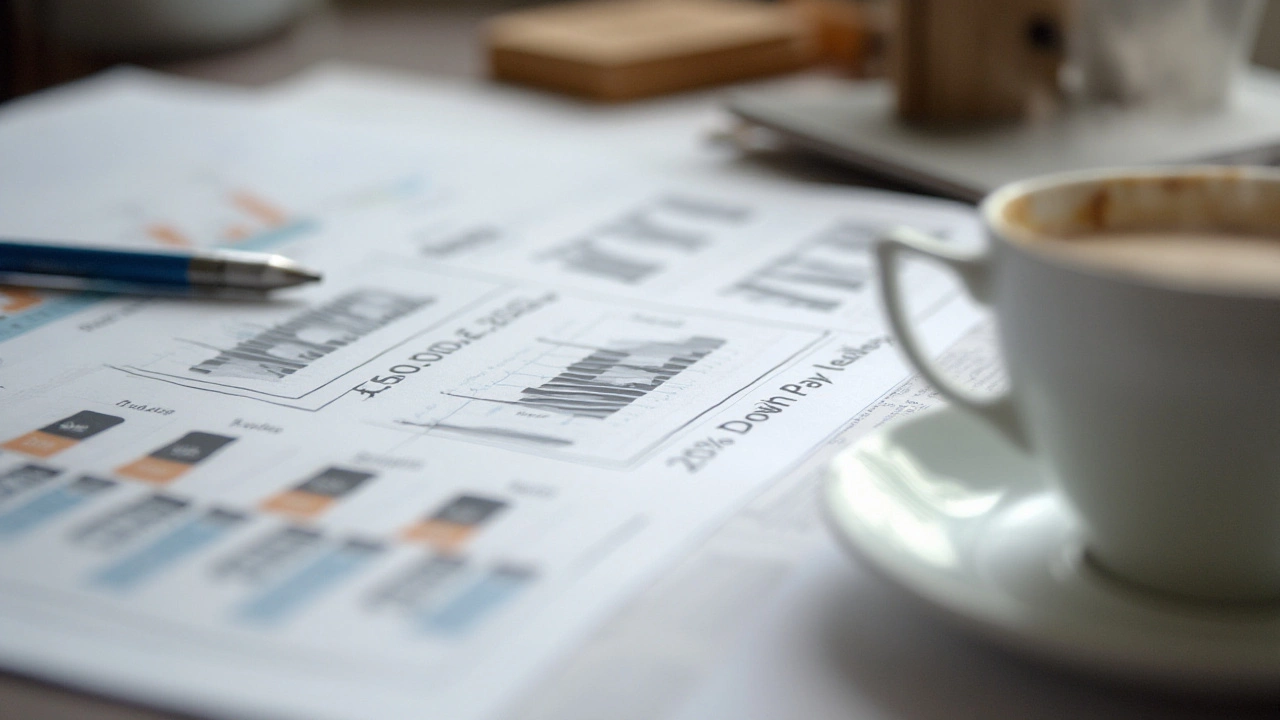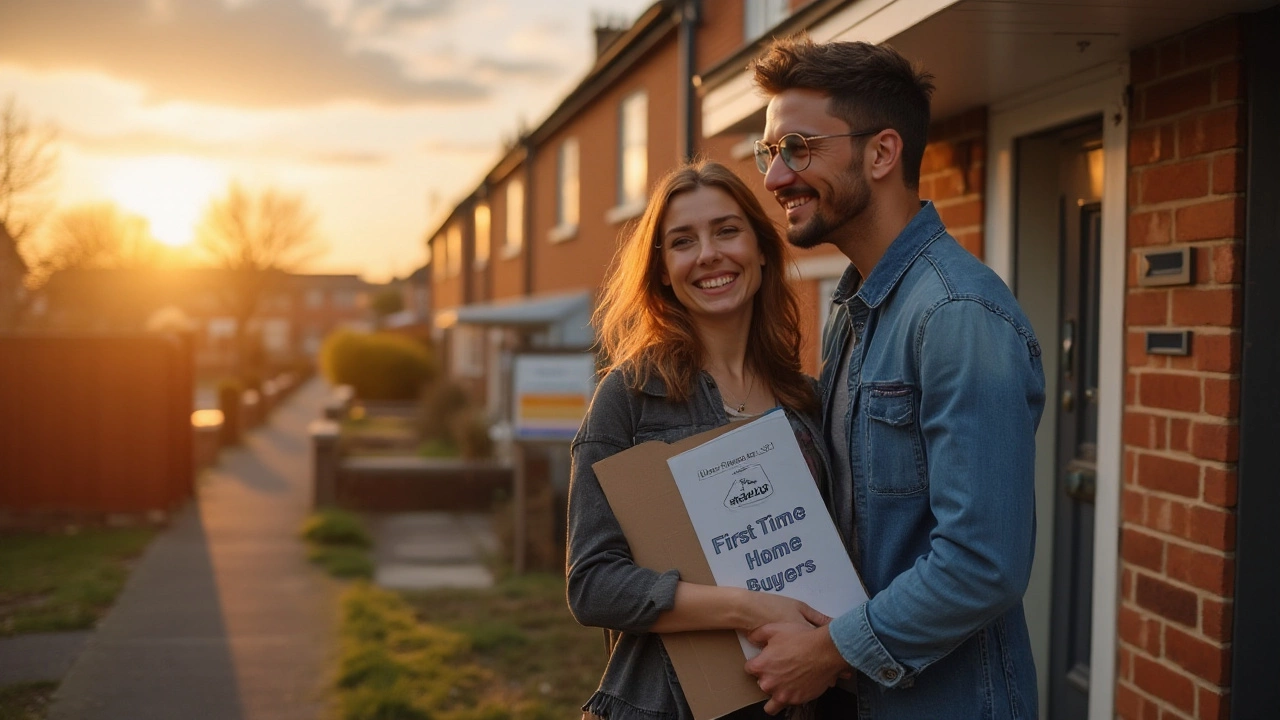Buying your first home marks an exciting chapter in life, filled with new opportunities and a few inevitable challenges. One of the first hurdles potential homeowners encounter is the concept of a down payment. For a $300,000 home, this often means preparing for a substantial financial commitment—something that can seem overwhelming at first glance.
In many traditional lending scenarios, a 20% down payment is recommended. But what does this mean, and why is it so crucial? Understanding this part of your purchase can offer peace of mind and even strategic advantages as you embark on your journey to homeownership.
In this article, we'll explore why a 20% down payment is often encouraged, provide strategies to save up for it, and discuss alternatives if putting down that full amount isn't feasible. Whether you're cutting costs or considering financial assistance programs, we're here to guide you through each step.
- What Does a 20% Down Payment Mean?
- Why Aim for a 20% Down Payment?
- Strategies to Save for Your Down Payment
- Exploring Alternatives to the Standard 20%
What Does a 20% Down Payment Mean?
When stepping into the realm of homeownership, the concept of a down payment often appears as an intimidating obstacle. For a typical home buying scenario, a 20% down payment is a substantial sum, representing a fifth of the home's purchase price. In the case of a $300,000 house, this amounts to a significant $60,000. But what exactly does this financial jargon mean, and why is it set at 20%? Essentially, a down payment serves as your initial equity in the house. It’s your personal investment that reduces the amount you need to borrow from a lender. This up-front cost plays numerous roles in the buying process. It impacts the loan terms, the monthly mortgage payment, and even the overall cost of the loan. Understanding its importance is crucial for any prospective buyer aiming to enter the real estate market with confidence.
Historically, the 20% benchmark didn't just appear out of the blue. It became the standard largely due to its ability to lower the lender's risk. From a lender's perspective, a substantial down payment proves the buyer's financial responsibility. It aligns with securing the property's value should anything go awry. Essentially, the more of your own money you put down, the more 'real skin' you have in the game, and this trust can lead to favorable conditions when negotiating mortgage terms.
The benefits of sticking to a 20% down payment extend beyond just favorable lending terms. By putting down a larger initial payment, homebuyers can avoid the often-cumbersome Private Mortgage Insurance (PMI), which tends to be a requirement when putting down less than 20%. Avoiding PMI means lower monthly costs, and over the length of a mortgage, this can translate into significant savings. Not to mention, starting with a sizable chunk of equity can act as a buffer against housing market fluctuations, potentially staving off financial stress during economic downturns.
It's critical to recognize that not all are able to gather $60,000 at once, and flexibility exists in the market for circumstances such as these. With numerous first-time buyer programs and government-backed loans available, the rigidness of the 20% standard is easing, allowing homeownership accessibility to a broader audience. These programs often offer lower down payment options, sometimes as low as 3-5%, though they come with their own sets of qualifications and benefits.
In the intricate dance of real estate, being informed is your most potent ally. Understanding the role of the down payment can empower you to navigate with confidence. As noted by personal finance expert Dave Ramsey, "A down payment isn't just a price, it's a gateway to financial freedom and stability."
"Your home should be a blessing, not a burden. Consider all avenues before leaping."This emphasizes that while tradition holds value, personal financial stability remains paramount as you prepare to stake your claim in the housing market.

Why Aim for a 20% Down Payment?
Placing a 20% down payment on a $300,000 house might seem daunting, but it's a strategic move many potential homeowners prefer. This size of a down payment can significantly alter the financial dynamics of your mortgage. Firstly, putting down 20% reduces the total loan amount, which in turn diminishes the monthly payment responsibility. A smaller loan also means less interest over the life of the mortgage, so it's a cost-effective strategy in the long run. In essence, you're lowering your financial burden from day one, a smart move for anyone looking to foster stable financial habits.
Beyond monthly payment reduction, a 20% down payment can eliminate the need for Private Mortgage Insurance (PMI). This insurance is typically required by lenders if your down payment is less than 20%. By avoiding PMI, homeowners can save on monthly expenses and redirect those funds towards other essential needs or even additional payments towards the mortgage principal. PMI could add hundreds to your monthly costs depending on the size of your loan and creditworthiness, making this avoidance a tangible financial benefit.
Possessing a down payment of this size typically reflects a buyer's creditworthiness and financial discipline. It demonstrates to lenders that you are a responsible borrower, potentially leading to better loan terms and interest rates. A lower interest rate means you save more over the years, often translating to tens of thousands of dollars kept in your pocket. As a respectable source in financial planning, personal finance writer Liz Weston notes,
“A larger down payment gives you a much-needed flexibility in your mortgage options, and in today's market, every dollar counts.”
A 20% down payment also provides homeowners with equity from the outset. Equity is that valuable portion of your home that you truly 'own', and not something tied to a bank. More equity can grant you access to financing options like home equity loans, should unexpected life events require it. Additionally, high equity can secure your footing in fluctuating property markets, offering a buffer against potential downturns where you might otherwise owe more than the house is worth.
However, achieving this financial milestone can be a challenge. Planning and disciplined saving are paramount to reaching the goal of a 20% down payment. Consider starting by setting a clear budget and utilizing saving strategies like automatic transfers to a dedicated savings account. Additionally, some buyers may find it beneficial to seek assistance from programs designed to assist first-time buyers with down payment accumulation, or to delay purchase until their financial readiness aligns with their goals.
It's essential to view the 20% benchmark not just as a rule, but as a flexible approach to homeownership that offers numerous advantages. By understanding these benefits and preparing accordingly, potential homeowners position themselves for success in the home-buying journey—ensuring a secure financial future while stepping into their dream home. While the journey may require patience and discipline, the long-term rewards justify the effort.

Strategies to Save for Your Down Payment
Saving up for a down payment on a $300,000 house can seem daunting, but it's a feasible goal when approached with patience and strategic planning. A down payment often represents a significant chunk of money, but breaking it down into manageable steps can make the process less overwhelming. The beauty of a strategic saving plan is that it doesn't just have to be about cutting corners; it’s about making smart choices aligned with your financial goals.
Start by setting a clear savings target. For a 20% down payment, this would mean saving $60,000. While the sum may feel intimidating, achieving this goal doesn't necessarily require drastic lifestyle changes. Instead, consider the power of small, consistent adjustments. Begin by analyzing your spending habits over the past year to identify patterns. Cutting down on non-essential subscriptions or dining out a little less often can funnel more funds into your savings. Another potent strategy is to use windfalls like tax returns or bonuses solely for your down payment fund, rather than spending them impulsively.
A budget tailored to your goal can further streamline this process. Crafting a realistic budget involves balancing your income with expenses, setting aside a dedicated portion for your down payment each month. This ensures that you’re progressing steadily without straining your daily finances. Automate this allocation to a separate savings account to avoid temptation. In addition, look into savings programs designed for homeowners. For instance, many financial institutions offer high-yield savings accounts or certificates of deposit (CDs) with interest rates that can amplify your efforts over time.
Side gigs are another excellent avenue to bolster your savings. With today’s gig economy, opportunities abound in freelancing, ridesharing, or even teaching an online course based on your expertise. Each dollar earned from side hustles can be reserved specifically for your house down payment, propelling you closer to your goal. This method not only provides immediate cash but also diversifies your income stream, offering some financial resilience.
The importance of starting early cannot be overstressed. Compound interest is a powerful ally, transforming even modest savings into significant sums over time. Consider investing in a moderate-risk portfolio if your timeline allows, as long-term investments can yield better returns. For those who enjoy planning but need a bit more structure, speaking with a financial advisor might provide personalized insights. Additionally, investigate programs and grants available for first-time buyers which may offer matching contributions or other benefits to lighten your financial burden.
"The journey to saving for a down payment is like running a marathon, not a sprint. Consistency is key," says Jane Doe, a financial expert at SaveWise. This quote encapsulates the essence of why sticking to a plan can yield significant results in the long run.
To bring it all together, here are some steps to keep in mind:
- Establish a realistic savings goal.
- Create a detailed budget and automate your savings.
- Capitalize on additional income opportunities.
- Explore financial programs and grants.
- Consider seeking professional financial advice.

Exploring Alternatives to the Standard 20%
As a first-time buyer, coming up with a full 20% down payment on a $300,000 house can seem like a daunting task. Luckily, there are alternatives that can make the dream of homeownership more accessible. Understanding these options is crucial because they open doors to varied opportunities, sometimes turning what feels impossible into attainable reality. One of the most common alternative strategies involves putting down less than 20%. For example, many lenders offer loans requiring as little as 3.5% to 5% down, such as those backed by the Federal Housing Administration (FHA). These loans are designed to aid those who may not have the traditional savings required for a larger down payment. By reducing the initial financial burden, these loans cater to people with limited funds but a steady income capable of handling monthly payments and interest over the long term.
Some might wonder, "What’s the catch?" There is indeed a trade-off. A lower down payment often means higher monthly mortgage payments and Private Mortgage Insurance (PMI). PMI is usually required when your down payment is less than 20%. It serves to protect the lender in case of borrower default, but this additional cost can be a long-term financial commitment. As borrowers weigh the pros and cons, it’s pivotal to calculate whether these heightened monthly costs align with their overarching financial plans. According to a 2022 report from the Urban Institute, “PMI can add hundreds of dollars to your payments each month, but for many, the ability to purchase a home sooner justifies this initial expense.”
Another compelling alternative involves assistance programs specifically tailored for first-time home buyers. Across the United States, you will find a myriad of down payment assistance programs offered by both government entities and private organizations. These typically come in the form of grants or forgivable loans aimed at helping new homeowners bridge the gap of the initial payment. Many states offer assistance up to $10,000, which can make a significant dent in reducing the amount needed upfront. However, each program will have specific eligibility criteria, often based on income level, employment status, or geographic location, to ensure that aid goes to those who truly need it. It's wise to thoroughly research these options in your locality as they can provide crucial financial relief.
Moreover, for those employed in certain sectors, like education or law enforcement, there are specialty lending programs. These target professionals who are pillars of their communities, allowing them to secure homes in the neighborhoods where they contribute most. The Good Neighbor Next Door program, for example, offers up to 50% off the list price of homes in designated areas for eligible teachers, firefighters, and law enforcement officers. By grooming stability in these key professions, the programs also strengthen community ties.
Finally, family assistance can be another valuable resource for overcoming down payment hurdles. Whether it's a formal agreement through which family lends funds or a gift, familial support often proves crucial. Lenders generally prefer gifts rather than loans to reduce financial encumbrances, requiring documentation to verify the funds genuinely do not need repayment. This alternative, however, isn't available for everyone. It can sometimes strain family dynamics, underscoring the importance of clear, consensual discussions before any financial commitments. For those fortunate enough to have this option, transparent communication is key to maintaining personal and financial harmony.
Investing in real estate is a personal choice, and these alternatives to the standard down payment can make homeownership a tangible goal for many. As you navigate the options, remember that each alternative carries unique benefits and potential downsides. It’s vital to weigh these aspects against your individual circumstances, consulting with professionals like mortgage advisors who can tailor guidance to your financial nightmares and dreams. By considering the full spectrum of possibilities, you'll be better equipped to chase your housing aspirations without unnecessary financial strain.


Corbin Fairweather
I am an expert in real estate focusing on property sales and rentals. I enjoy writing about the latest trends in the real estate market and sharing insights on how to make successful property investments. My passion lies in helping clients find their dream homes and navigating the complexities of real estate transactions. In my free time, I enjoy hiking and capturing the beauty of landscapes through photography.
view all postsWrite a comment